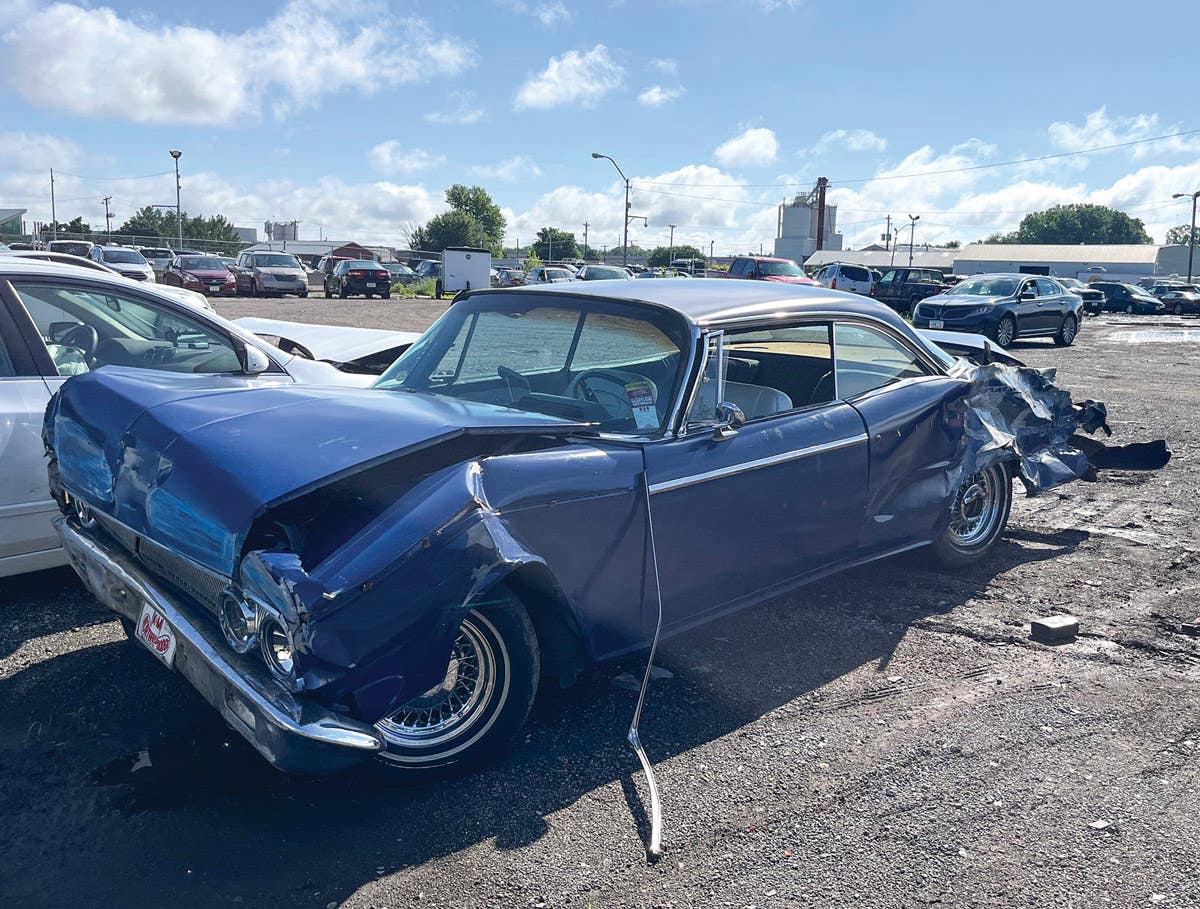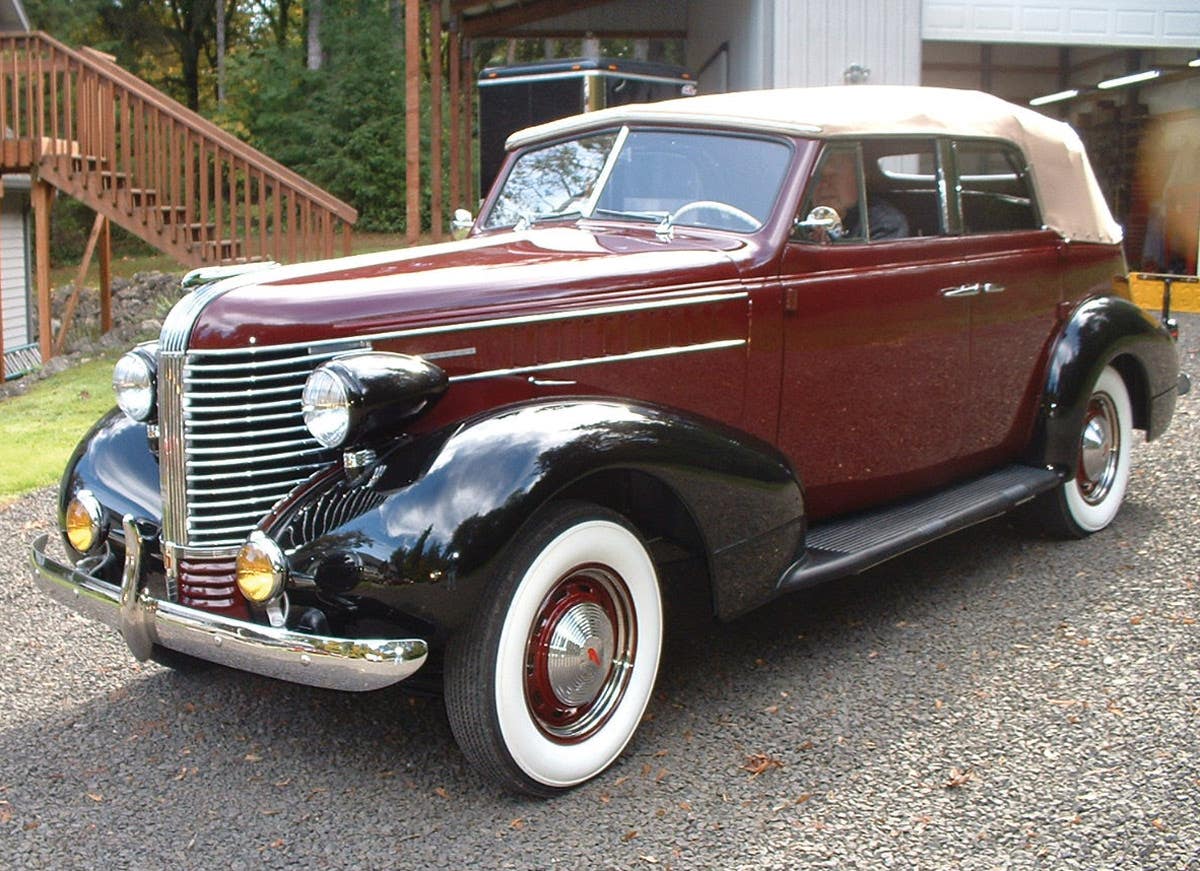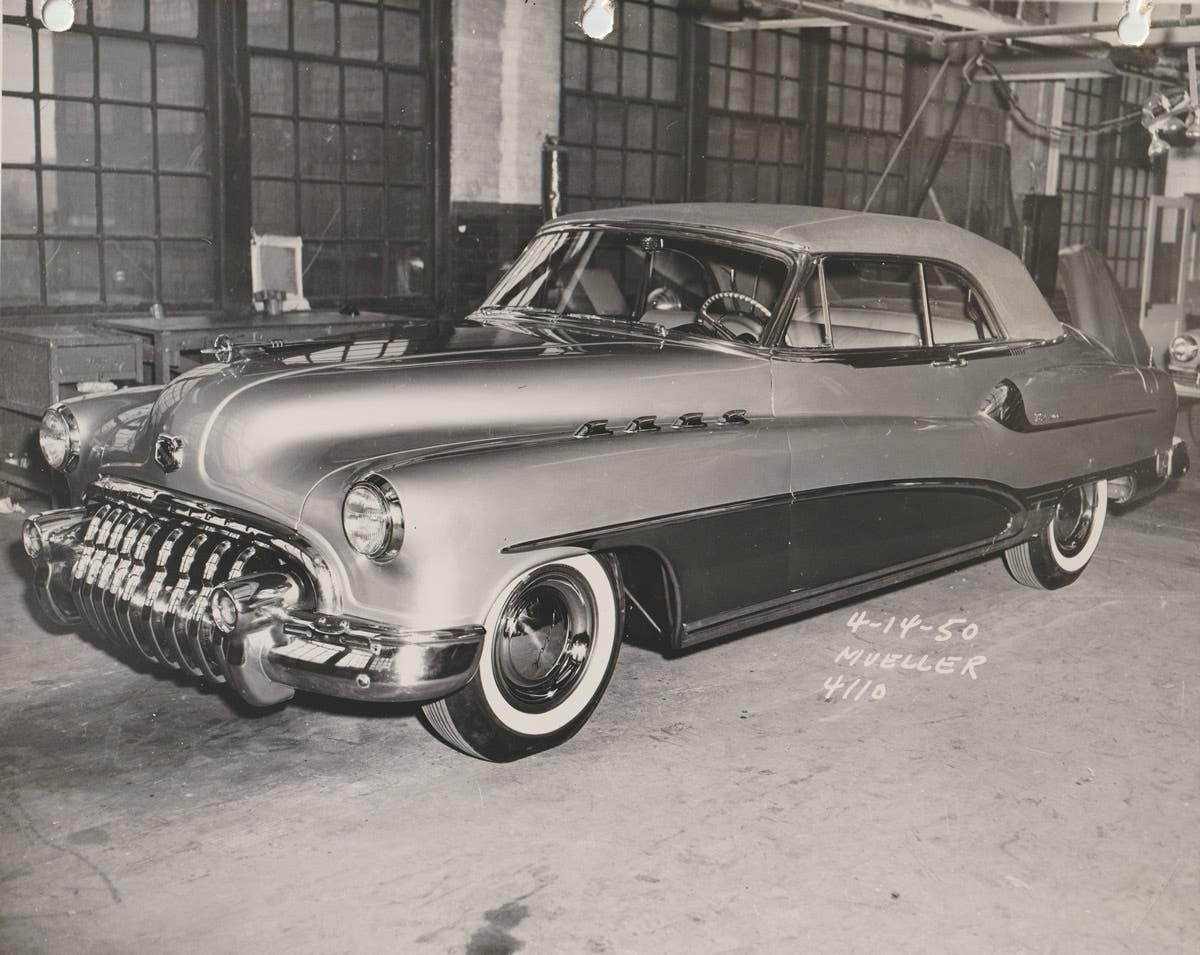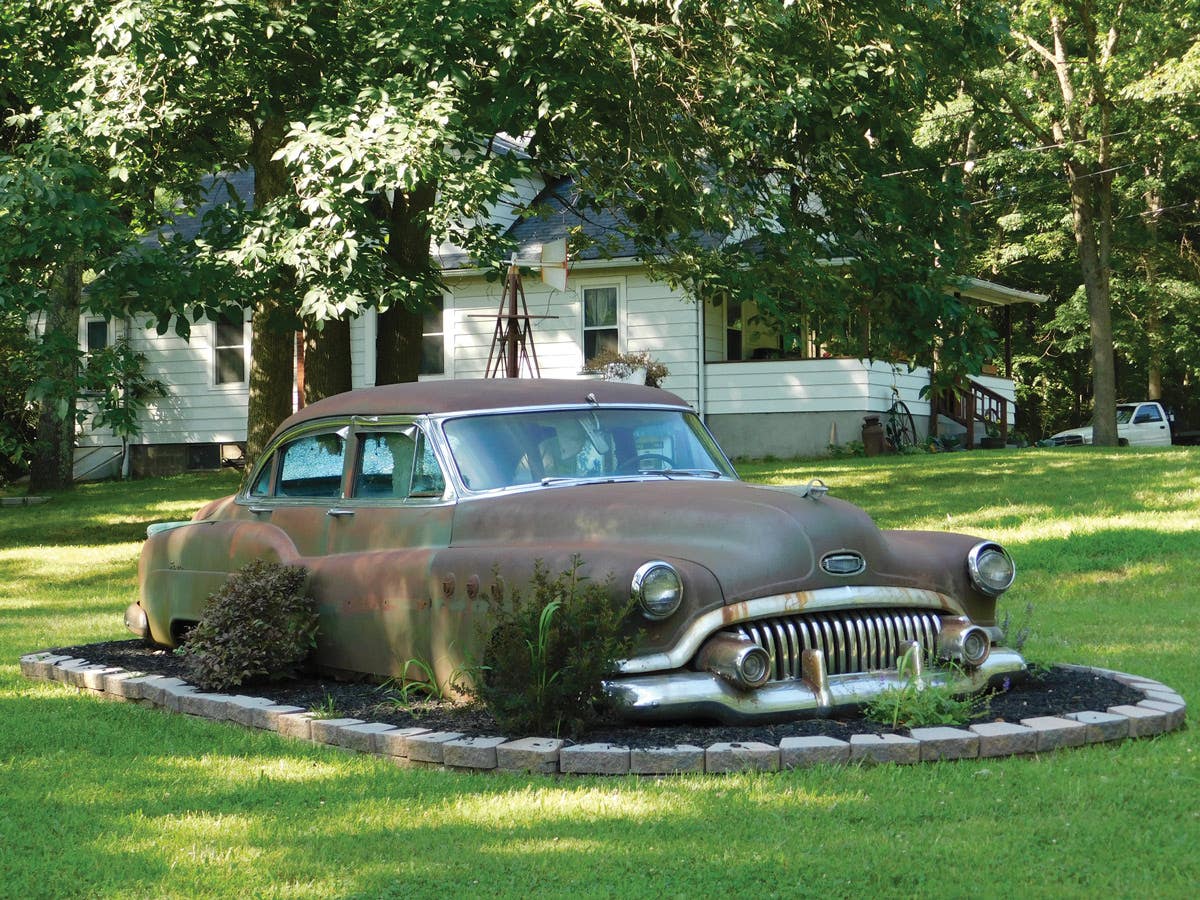Stephens brought fine car building to Midwestern farmland
For a time, a very brief time, Stephens automobiles offered good return for the money. Who could ask for anything more in an American-made car with a true Midwestern heritage?
Shortly after the Civil War, George Stephens started the Moline Plow Co. in Illinois. Little did he know that his business would range from plows to pistons in less than 50 years. The plows his company made were quality products. The same can be said of the car, named after the company founder.
By 1870, America was on the advance. Millions of immigrants had flooded eastern cities and southern ports, intent on making their way inland to realize the American dream of wealth and freedom. Illinois had grown from a frontier state in the 1830s to one of the most promising agricultural centers in the land. Up north, with the formation and rise of Chicago, industrialization had come to the Midwestern state. Tens of thousands of westward-moving immigrants settled in Illinois, providing a welcome workforce. Cheap labor and able craftsmen made the work of plow making very profitable. To say the market was big is an understatement.
Still, it was not big enough for the company’s leaders. Bargains surfaced. A conglomerate of companies were absorbed and associated with the Moline Plow Co. The demand for wheeled transportation grew with the populace. People needed to travel. As a result of mergers, the organization set its direction as the manufacturer of buggies and wagons.
This was a hot Midwestern trend in the 1880s and ’90s. Buggy builders sprang up on a wish and a prayer with little more than a modest production facility, a small amount of capital, a handful of workman, some know-how and an aggressive approach to business with its incumbent opportunities.
But horse-and-buggy days were on the wane as the 20th century dawned. Newfangled automobiles were plying pavements and seeking daily destinations beyond the scope of horse transportation. Smarter buggy and carriage makers assessed the trend and, sadly, realized their days were numbered.
Moline Plow was not alone in this advance. Midwestern companies made Moon buggies and Banner (Gardner) buggies in Missouri. Similar buggy-making hopefuls were in operation under different names in other states. More than a few jumped from that trade, sashaying into car production as the market changed. The Velie Carriage Co. of Moline was one of those. It entered the buggy field in 1902 as a late upstart. Almost as soon as it entered, it was dazzled by the flash of the automobile.
Specifically, Williard Velie was impressed with the automobile before entering buggy production. Practical as he was, he assessed the business potential and realized it was a wee bit early to jump into a car business until sufficient buyers were on hand. So buggies formed his launch.
It proved smart, indeed, to begin so cautiously. In mid-1908, Velie cast aside his reservation and risked car production. Maybe it wasn’t such a dangerous gamble. His grandfather, John Deere, had struck it rich in farming equipment, and fellow Velies were well represented as directors. The Velie Model 30 was being produced by year’s end; it was the product of American and British technology. As well made as a John Deere plow, the car was phenomenally successful to the tune of 1,000 units that first production year.
That’s how it was in Moline. The car was replacing the horse and buggy. Officials with Moline Plow kept an eye on Velie, its local competitor. This scrutiny was logical, given the fact that both companies were based in the same town. Both looked to the local populace and rural Illinois to be among the prime market.
Moline Plow stuck with horse-drawn conveyances, perhaps too long. By 1915, that business had slipped. Prognosticators were claiming the buggy business was on the skids. Buggy makers blinded by optimism said the automobile was a fad, that horse-drawn buggies and wagons were indispensable. Fancy that. By 1917, most of those pie-in-the-sky hopefuls had their dreams dashed. The market for all practical purposes was hardly a dribble of its former stream.
With the help of E.T. Birdsall, who was involved with designing the Selden automobile, the concept for a Stephens automobile was racing down the road in the spring of 1916 when Dr. C.L. Best, a physician, bought one of the first Stephens. Production in Freeport, Ill., was in full sway for 1917, with the sales price as low as $1,075. The first production model had carried a four-cylinder engine, but the six dominated the Stephens line beginning in 1917. Early Continental engine Model 7W gave way to overhead-valve units by Root & Vandervoort Engineering Co. of East Moline. In 1920, Moline Plow realized about 80 percent of that engine production was bought by them, so they simply took over that company, too.
By then, John North Willys had peered favorably toward Moline Plow. In 1919, he acquired the controlling interest. This was the man behind the formation and growth of Willys-Overland, one of the largest carmakers in early automobile history. Mr. Willys kept the Moline Plow operation separate from Willys-Overland for reasons of his own.
When 1922 rolled around, the car-making portion of Moline Plow was mainly on its own. This was an era of financial stress for the nation. Car companies had become liabilities with high overhead and pre-production debts that seemed to balance when sales were strong, but not when they were weak. Matthew Steele managed the car operation. John Trumble was chief engineer (with experience at Chevrolet). John Holden served as chief draftsman.
The Stephens Salient Six, as the early version was called, was a good, medium-price car. It was not very memorable, but it was reliable, sturdy and attracted regional buyers who preferred to “favor their own,” rather than buy cars from across the country.
The Stephens dream, like that of so many immigrants to America, was one of wealth and freedom — freedom to experiment in production that could lead to substantial profits. Some of the models made in Freeport, such as the Stephens Foursome, were stylishly fit for those times we call the Roaring Twenties — when a generation was in search of fun, frolic, favoritism and freedom.
Then, almost as suddenly as the company had entered the car business, it abandoned ship. That was 1924. For many Midwestern car producers, the mid-1920s marked a period of declining sales in favor of well-known, nationally distributed makes.
The Stephens operation went back to its roots and concentrated on the farm implement business.
How many Stephens automobiles were manufactured? Estimates range from 25,000 to 35,000. It’s not an easy question to answer. Carmakers used different types of numbering techniques, even skipping a percentage of consecutive numbers. To historians, it seems as though car companies with modest production tended to inflate the tallies. It may have been a ploy to fool the competition and impress number crunchers.
Soon after new-car introduction for 1917, the Stephens Motor Branch of Moline Plow announced “conservative individuality” in a touring car, for $1,385. “The Moline Plow Company is conservative, sturdy, reliable, honest,” said the sales pitch. “Fifty-two years of manufacturing experience have taught us that business longevity can be obtained only by marketing an honest product on a fair sales plan.”
For 1919, Stephens Motor Works (as it was then called) promoted its body-engineering department based on quality coachwork derived from decades of building bodies for carriages.
“Sedans and coupes are really custom built, hand fashioned and hand finished …painting consisting of 14 distinct hand operations…mirror-like surface…perfection of detail….” From 1917 through 1921, the Stephens touring car appeared to be nearly unchanged. That’s true conservatism. Many buyers liked that since it kept their cars in vogue.
All Stephens automobiles in the 1920s carried the reliable six-cylinder engine of the company’s own design with a bore and stroke of 3.25 by 4.5 inches and a 224-cubic-inch displacement. At 2,700 rpm, horsepower was rated 57, edging up to 59 after 1921. Top speed of the Stephens was around 60 mph. Economy lingered around 18 to 20 miles per gallon. Early models ran on a wheelbase of 122 inches. Later versions were 117 inches.
Over the years of production, prices ranged up to $3,400. In a very good year, the company made as many as 4,000 cars. Reportedly, nearly 7,000 were made in 1920, its best year.
The Stephens was called “salient.” Why? It was defined as a car that “strikingly manifests or catches the attention at once.” Sounding faintly familiar to the Packard motto of “Ask the Man Who Owns One,” Stephens advertising stated: “Our owners are never content until they have sold the car’s virtues to their friends.”
For a time, a very brief time, the Stephens offered good return for the money. Who could ask for anything more in an American-made car with a true Midwestern heritage?
Special thanks to historian and author Richard Stephens for encouraging this article (trikydic@mindspring.com).







